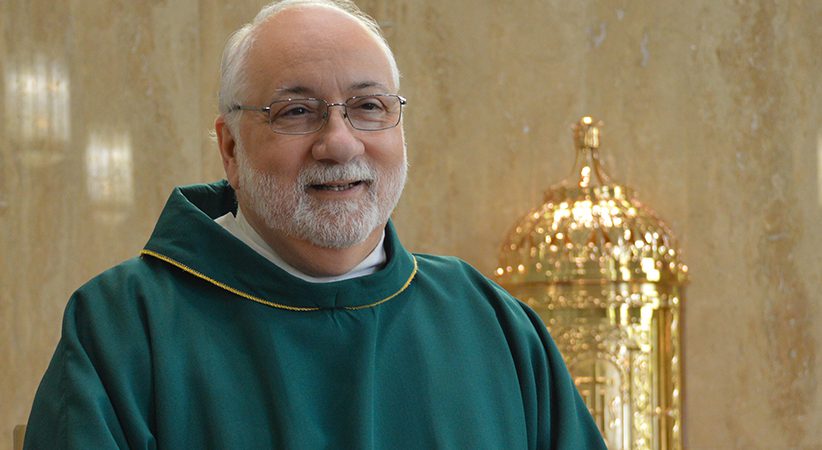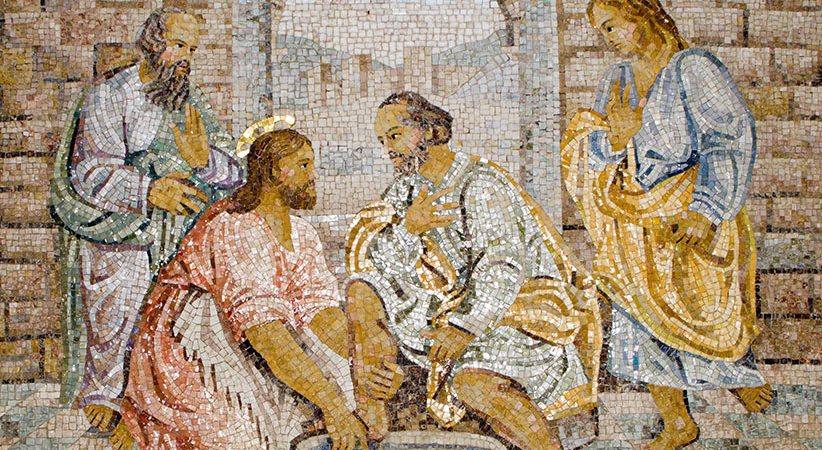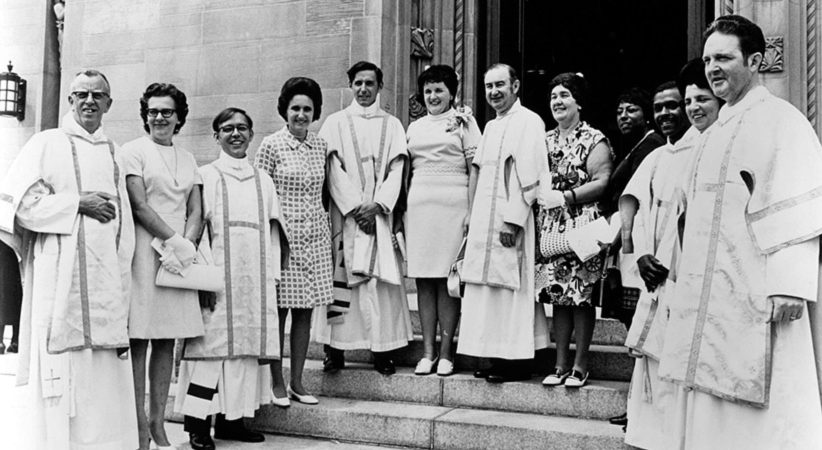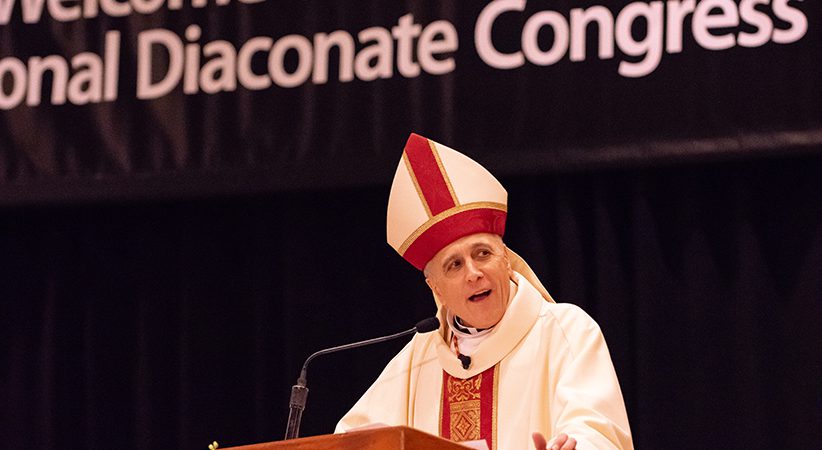A Look at ‘Our Life of Service’
Leon Suprenant Comments Off on A Look at ‘Our Life of Service’
Since his ordination to the diaconate 20 years ago, Deacon Harold Burke-Sivers has been a leading light in the diaconate community, in large part because of his dynamic presentations on a wide range of topics, from apologetics and men’s ministry to sacraments and racism, as well much, much more. What a treat for all of us in the deacon world (and beyond!) that Deacon Burke-Sivers has carved time out of his hectic speaking and writing schedule to author a new book specifically on the diaconate: “Our Life of Service: The Handbook for Catholic Deacons” (Ave Maria Press, $17.95).
Fittingly, Deacon Burke-Sivers has crafted his book around the theme of service, broadly understood in light of the diakonia of Christ the Servant.
One thing that grabbed my attention right away is his salutary emphasis on diaconal spirituality. While he eventually covers the full range of diaconal service, the first chapter is devoted specifically to the deacon’s need to “serve the spiritual life” as the foundation for his diaconal life and ministry. The priority of the spiritual life calls forth from the deacon an intentionality in “being who he is” as deacon, as well as a vulnerability modeled on Christ’s gift of self for his bride, the Church.
But even before we get to Chapter 1, Deacon Burke-Sivers lays out in the introduction his own “plan of life” — showing us in very practical and personal terms how he prioritizes his relationship with Christ in “real life” as a Benedictine Oblate, deacon and husband and father living in the world. Immediately, the reader cannot help but start considering what steps he might make to improve his own spiritual life.
As a handbook, this indeed is a very practical tool for deacons and even deacon candidates. But in addition I think it can serve as a guide or even as a template for deacon formators as they seek to instill an authentic diaconal spirituality in those under their charge. Each bite-sized chapter, such as “Serving My Parish” or “Serving My Wife,” follows a similar format.
Each chapter begins with a piece of engaging, highly readable theological reflection on the topic at hand while in the process clearing up some misconceptions concerning the diaconate. Before he goes too far, however, Deacon Burke-Sivers provides helpful tips for navigating troubled waters, such as preparing homilies or talks on difficult subjects, resolving conflicts or effectively ministering to those who are in pain.
Then he brings in other deacons from around the country to share their insights on the particular topic — usually one or two deacons per chapter. This enriching collaboration is not only good in itself but also models the sort of teamwork and fraternity that has always been a hallmark of the diaconate at its best.
After all this great information, Deacon Burke-Sivers then puts the reader to work, providing questions for self-evaluation and goal-setting exercises toward the end of each chapter. These are always down-to-earth and specific, and as such are useful for not only the individual deacon or deacon couple but also ideal for deacon support groups to work through together.
Then, fittingly, each chapter ends with a prayer that flows from the author’s rich diaconal spirituality and experience.
In Chapter 2, he emphasizes that deacons are ordained to assist the bishop with his fundamental task (munus) of evangelization, so that all people may have a life-changing encounter with the living God. Even though the common experience of most lay Catholics is that deacons are simply middle management in the parish, the primary place where the deacon fulfills this responsibility is outside of formal parish structures — in other words, in the margins or peripheries where the physically and/or spiritually poor reside. Deacon Burke-Sivers, calling to mind the servant mystery of the paralytic on the stretcher (cf. Lk 5:17-26), exhorts deacons to lift up the poor and guide them to the healing balm of Christ.
Most deacons will probably gravitate to the third chapter, on “serving the Word,” given the author’s well-deserved reputation as a powerful, effective preacher. And he doesn’t disappoint, providing many concrete suggestions and tools for growth as a preacher. Further, he tackles head-on the issue of the deacon’s preaching at Mass, since deacons generally have the faculty to preach even though the General Instruction of the Roman Missal seems to restrict the exercise of this faculty.
Deacon Burke-Sivers’ answer is that the homily is but one form of liturgical preaching — and one that deacons should do well when called upon. Still, he reminds the reader that the deacon’s primary responsibility for liturgical preaching (and, for that matter, not all preaching is liturgical!) is outside of Mass. There is no shame in that, and, in fact, in preaching outside of Mass, the deacon is imitating the actions of Christ the Servant, “who is most often seen in the gospels ministering to the poor, healing the sick, and telling parables to the masses, who followed him with ‘ears to hear’” (Page 40).
Deacon Burke-Sivers offers separate chapters on a deacon serving his wife (Chapter 4) and serving his children (Chapter 5). At the relatively tender age of 36, Deacon Burke-Sivers became the youngest man ever to be ordained to the permanent diaconate for the Archdiocese of Portland in Oregon, and his wife gave birth to twins the week of his ordination.
So his approach to “ministerial balance” and resolving any perceived conflicts between family and ministry has been refined through his challenging personal experience as a young deacon and as a young dad. He deftly integrates commonsense (or uncommonsense) guidance with a sound catechetical understanding of both vocations. As men called to be servants at home, laying down their lives for their domestic church, all married deacons will benefit greatly from his evangelical wisdom in this area.
When discussing “serving the parish” (Chapter 6), Deacon Burke-Sivers takes a deeper dive into the deacon’s role in the evangelizing mission of the parish. The deacon is surely a bridge between priests and laity, but he has his own distinctive identity and role, and is not some sort of “hybrid” personage. Some beautiful insights in this area include the deacon’s bringing hope to the brokenhearted, persevering in intercessory prayer and working toward the healing of racial and cultural divisions.
In the concluding chapters, Deacon Burke-Sivers calls for deacons to think and especially to pray “outside the box” of existing parochial structures in offering the mercy and healing of Christ to a broken, sinful world. In this regard, deacons are, in the words of Archbishop Roberto O. González Nieves of Puerto Rico, the “missing arm” of the bishop. Therefore, deacons must embrace the call to holiness and continuing formation (human, spiritual, intellectual and pastoral) so that they may bear good, lasting fruit.
I think “Our Life of Service” will prove to be a timely, invaluable companion to the new edition of the National Directory. The deacon community — present and future, especially those involved in formation — owe Deacon Burke-Sivers a huge debt of gratitude for this solid and eminently practical resource.
LEON SUPRENANT is co-director of the Office of the Permanent Diaconate for the Archdiocese of Kansas City in Kansas.





